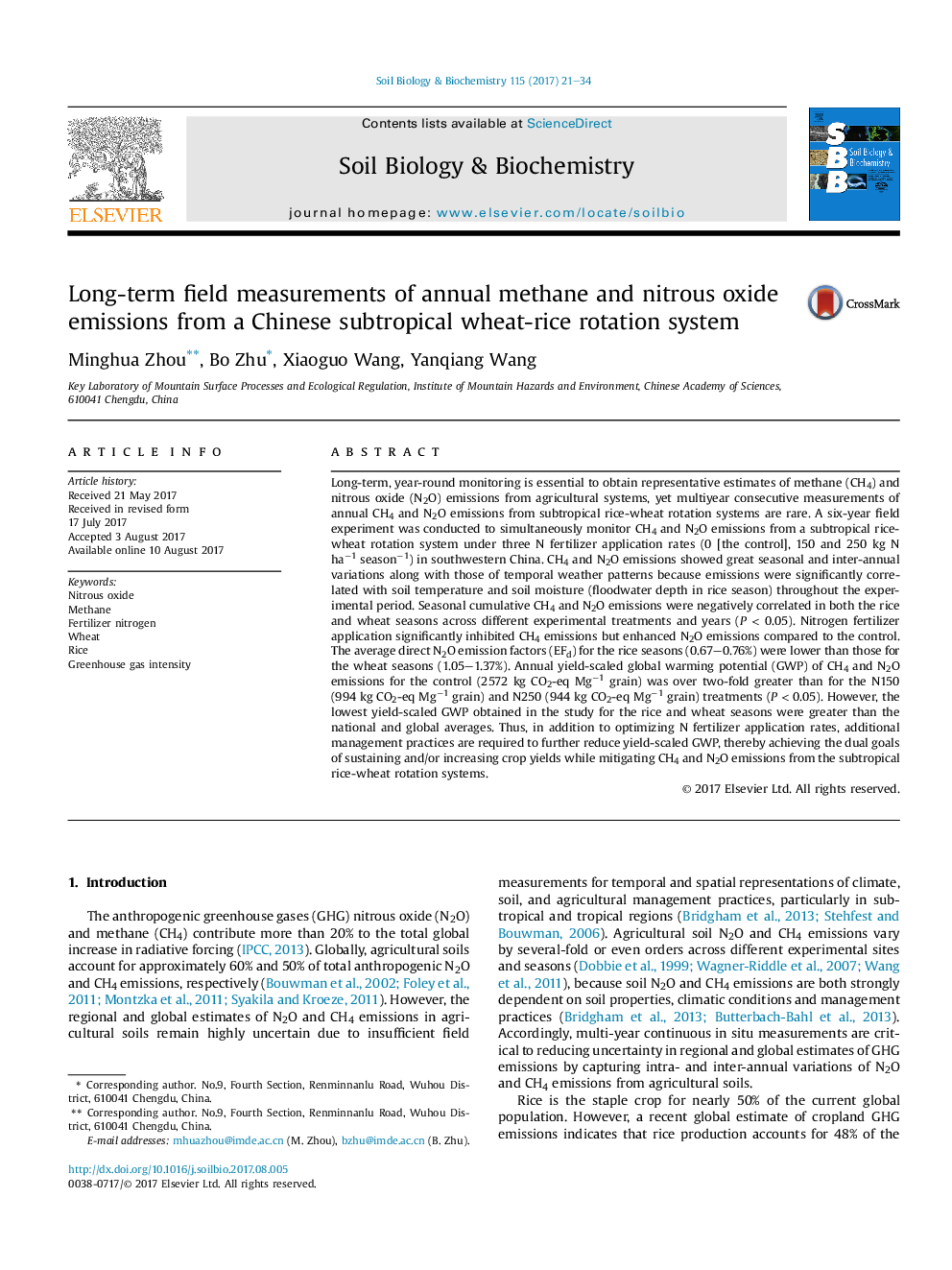| کد مقاله | کد نشریه | سال انتشار | مقاله انگلیسی | نسخه تمام متن |
|---|---|---|---|---|
| 5516221 | 1542569 | 2017 | 14 صفحه PDF | دانلود رایگان |
- Six-year field measurements of GHG emission in subtropical rice-wheat rotation system.
- Seasonal and annual CH4 emissions decreased with fertilizer N addition.
- CH4 and N2O emissions significantly correlated with environmental factors.
- N2O emission factors for rice were over two-fold greater than the IPCC default value.
- Yield-scaled GWP was minimized at the recommended N rate of 150 kg N haâ1 seasonâ1.
Long-term, year-round monitoring is essential to obtain representative estimates of methane (CH4) and nitrous oxide (N2O) emissions from agricultural systems, yet multiyear consecutive measurements of annual CH4 and N2O emissions from subtropical rice-wheat rotation systems are rare. A six-year field experiment was conducted to simultaneously monitor CH4 and N2O emissions from a subtropical rice-wheat rotation system under three N fertilizer application rates (0 [the control], 150 and 250 kg N haâ1 seasonâ1) in southwestern China. CH4 and N2O emissions showed great seasonal and inter-annual variations along with those of temporal weather patterns because emissions were significantly correlated with soil temperature and soil moisture (floodwater depth in rice season) throughout the experimental period. Seasonal cumulative CH4 and N2O emissions were negatively correlated in both the rice and wheat seasons across different experimental treatments and years (P < 0.05). Nitrogen fertilizer application significantly inhibited CH4 emissions but enhanced N2O emissions compared to the control. The average direct N2O emission factors (EFd) for the rice seasons (0.67-0.76%) were lower than those for the wheat seasons (1.05-1.37%). Annual yield-scaled global warming potential (GWP) of CH4 and N2O emissions for the control (2572 kg CO2-eq Mgâ1 grain) was over two-fold greater than for the N150 (994 kg CO2-eq Mgâ1 grain) and N250 (944 kg CO2-eq Mgâ1 grain) treatments (P < 0.05). However, the lowest yield-scaled GWP obtained in the study for the rice and wheat seasons were greater than the national and global averages. Thus, in addition to optimizing N fertilizer application rates, additional management practices are required to further reduce yield-scaled GWP, thereby achieving the dual goals of sustaining and/or increasing crop yields while mitigating CH4 and N2O emissions from the subtropical rice-wheat rotation systems.
Journal: Soil Biology and Biochemistry - Volume 115, December 2017, Pages 21-34
